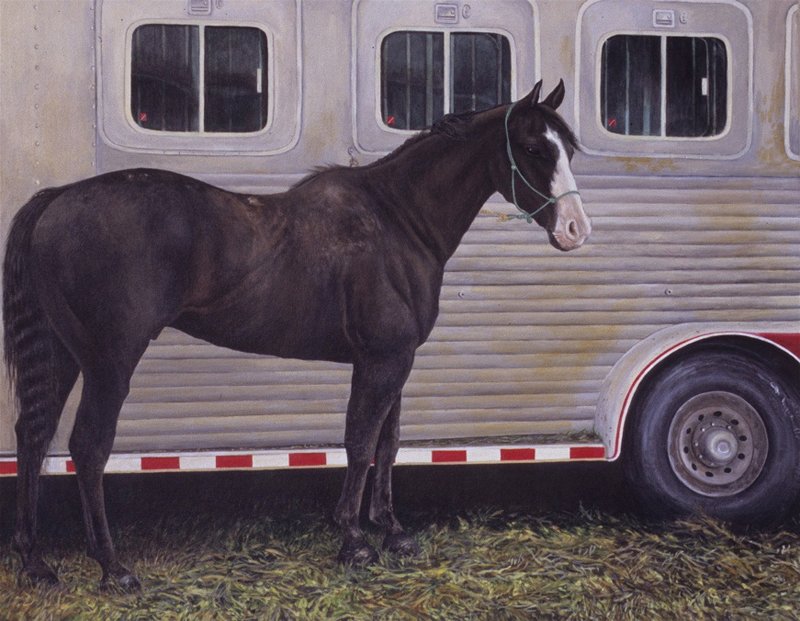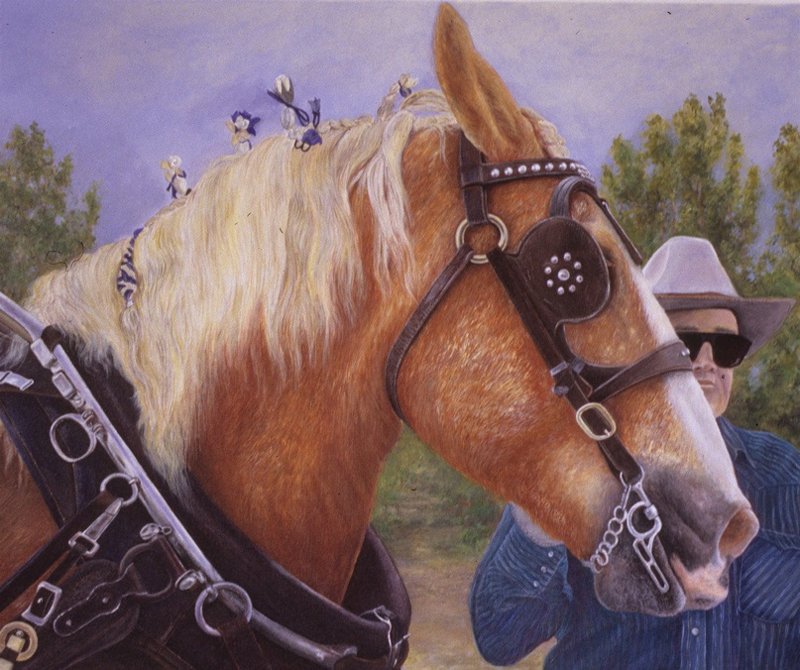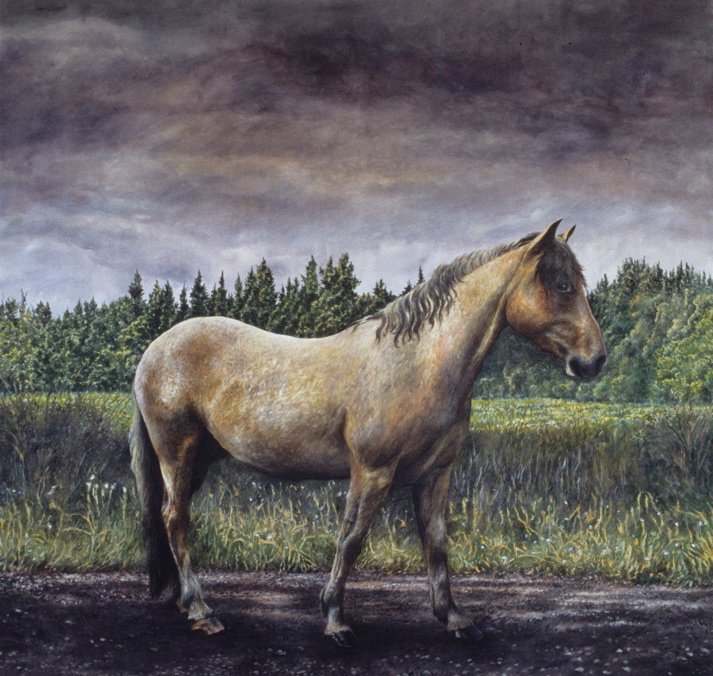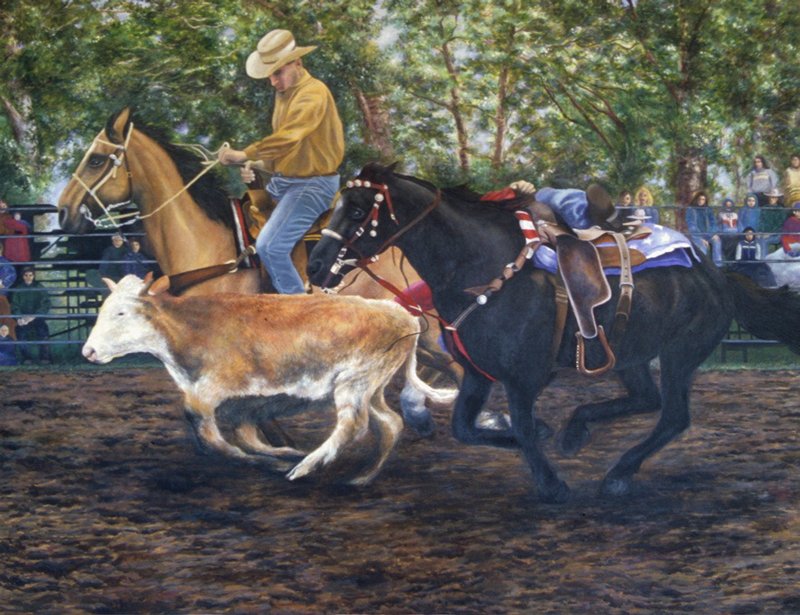The Sculptural Forms of Animals
The initial inclusion of horses and other animals in my paintings happened while I was working towards an exhibit in Norway. Having lived there I knew that the landscape was never empty but continuously dotted with sheep, horses, or people. Yet like Saskatchewan, it has had a culture entrenched in the landscape. Growing up in Saskatchewan instilled in me a connection to the land. Extensive painting in Saskatchewan, and Alberta, frequently at ranches and farms continued the link between painting, nature, and animals as an iconography of a settled landscape. I became intrigued with the idea of rough stock and domestic farm animals as an intrinsic and major element of the composition and narrative.
These paintings have settings of either landscapes, rodeos, ranches, or heavy horse shows which are not wildlife but part of a socially constructed environment. The tradition of painting horses in Western art is extensive and the idea of how to contemporize this tradition has been a challenge and motivation. These creatures are perceived through the lens of culture. Nature and culture in these paintings are so entwined that it is impossible to separate one from the other. The process of painting animals is more that just conveying a motif but the record of a culturally charged and ever changing environment.
My animal paintings are examples of illusionist space. Modeling and the direction of light articulates the three dimensional shapes. The images are developed and explored in order to convey the strength, gesture, and sculptural forms of animals.









